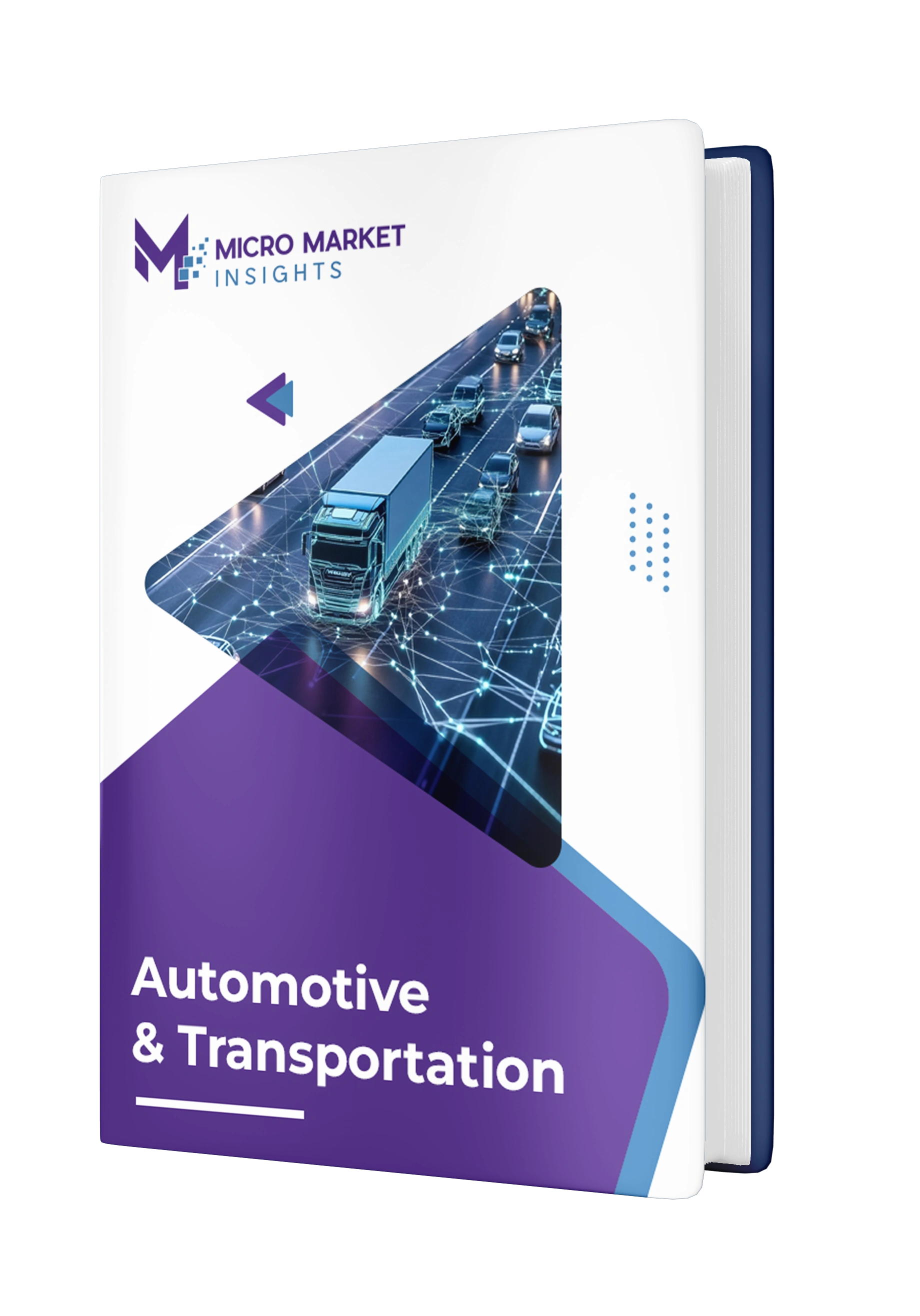Stay informed with the latest market research insights and news updates.
Welcome to Micro Market Insights, your trusted source for the latest market trends and insights! The automobile and transportation industry is evolving at an unprecedented rate, fueled by technological advancements, regulatory pressures, and shifting consumer preferences. But what exactly is driving these changes? What opportunities lie ahead? And how are these trends shaping real-world applications? Let’s dive deep into the top driving points, future opportunities, and key applications that are reshaping this dynamic sector.
The global automobile and transportation sector is no longer just about getting from Point A to Point B. It’s a massive, interconnected ecosystem encompassing passenger vehicles, commercial transport, logistics, railways, and emerging smart mobility solutions. With revenue exceeding trillions of dollars globally, the industry has become a hotbed for innovation, efficiency, and sustainability.
The automobile industry is undergoing a tech transformation. Think of connected vehicles communicating with traffic systems, or cars equipped with Advanced Driver Assistance Systems (ADAS). Autonomous driving, 5G connectivity, blockchain-enabled logistics, and digital twins for vehicle simulation are no longer futuristic concepts. They're shaping our streets today. Companies leveraging AI, IoT, and cloud computing are setting new benchmarks in efficiency and safety.
Consumers are increasingly concerned about their carbon footprint. Demand for electric vehicles (EVs) and hybrids has soared, as buyers look for cleaner alternatives. Brands are responding by introducing affordable EV options, longer battery ranges, and more efficient drivetrains. The eco-conscious consumer is driving a seismic shift in vehicle production and design.
Governments worldwide are mandating stricter emission standards, incentivizing electric vehicle purchases, and investing heavily in EV charging infrastructure. Regulatory initiatives like Euro 7 norms and zero-emission vehicle targets are pushing manufacturers to rethink fuel efficiency and adopt cleaner technologies to stay compliant and competitive.
By 2050, nearly 70% of the world's population will live in urban centers. Cities are rapidly implementing smart mobility solutions to reduce congestion, pollution, and commute times. Public transportation systems, intelligent traffic management, and vehicle-to-infrastructure (V2I) communication are key components of this transformation. It’s about creating seamless, interconnected transit ecosystems.
The EV market is projected to reach $1.3 trillion by 2033. Battery technology advancements, government incentives, and consumer awareness are fueling this growth. OEMs are racing to establish battery manufacturing plants and charging networks, ensuring supply chains stay robust. The shift to electrification offers lucrative opportunities for manufacturers, energy providers, and even tech firms.
Driverless cars are no longer sci-fi. Companies like Tesla, Waymo, and GM Cruise are already testing fully autonomous fleets. The autonomous vehicle market could surpass $800 billion by 2033, impacting ride-sharing, freight transport, and public transit. Regulatory clarity and advancements in AI are paving the road for self-driving adoption.
From predictive maintenance to smart navigation, AI is becoming the brain of modern vehicles. Machine learning algorithms process terabytes of data to optimize fuel efficiency, detect hazards, and personalize user experiences. Businesses investing in AI-driven analytics will gain a significant competitive edge in predictive vehicle management and customer satisfaction.
Emerging economies in Asia-Pacific, Latin America, and Africa offer immense untapped potential. Rising disposable incomes, urban growth, and government investments in infrastructure create new opportunities for automakers, logistics providers, and technology firms. Expansion into these regions ensures diversified revenue streams and sustainable growth.
Platforms like Uber, Lyft, and Didi have revolutionized how people commute. The shared mobility market is expected to exceed $300 billion globally by 2033. Subscription-based vehicle ownership models and ride-hailing apps are gaining traction among urban millennials, reducing the need for personal car ownership.
Telematics systems offer real-time tracking, fleet management, and remote diagnostics. Combined with infotainment solutions providing seamless entertainment and navigation, this market is projected to cross $200 billion by 2033. It’s not just about driving anymore—it’s about the in-car digital experience.
Safety is paramount. ADAS features like lane-keeping assist, blind-spot detection, and collision avoidance systems are now standard in many models. Regulatory agencies are mandating these features, making them crucial selling points. They reduce accidents, lower insurance premiums, and enhance the overall driving experience.
E-commerce boom has made last-mile delivery a critical aspect of logistics. Electric cargo bikes, automated delivery bots, and drones are being deployed to reduce costs and emissions. Businesses capitalizing on efficient last-mile solutions will lead the future of urban logistics.
The automobile and transportation industry is at a transformative juncture. From technological breakthroughs and sustainability demands to emerging markets and innovative applications, the opportunities are vast. Companies that adapt, innovate, and align with the evolving landscape will not only survive but thrive. Stay tuned to Micro Market Insights for the latest trends and in-depth market analyses that keep you ahead of the curve.
Technological innovations, consumer demand for sustainability, government regulations, and urbanization trends are key growth drivers.
The EV market is expected to hit $1.3 trillion by 2033, thanks to battery advancements and increasing eco-consciousness.
AI powers predictive maintenance, smart navigation, autonomous driving, and personalized in-car experiences, making transportation safer and more efficient.
Shared mobility reduces the need for personal car ownership, encourages ride-hailing services, and opens up subscription-based vehicle models.
Emerging markets offer growth in vehicle sales, infrastructure investments, and technology adoption due to urbanization and rising income levels.

Automobile_and_Transportation / ICE, Electric, Hybrid, Autonomous Vehicles

Automobile_and_Transportation / Automotive Components

Automobile_and_Transportation / Automotive Components

Automobile_and_Transportation / Automotive Technology and Services

Automobile_and_Transportation / Automotive Components

Automobile_and_Transportation / Automotive Components

Automobile_and_Transportation / Telematics and Infotainment

Automobile_and_Transportation / Automotive Technology and Services